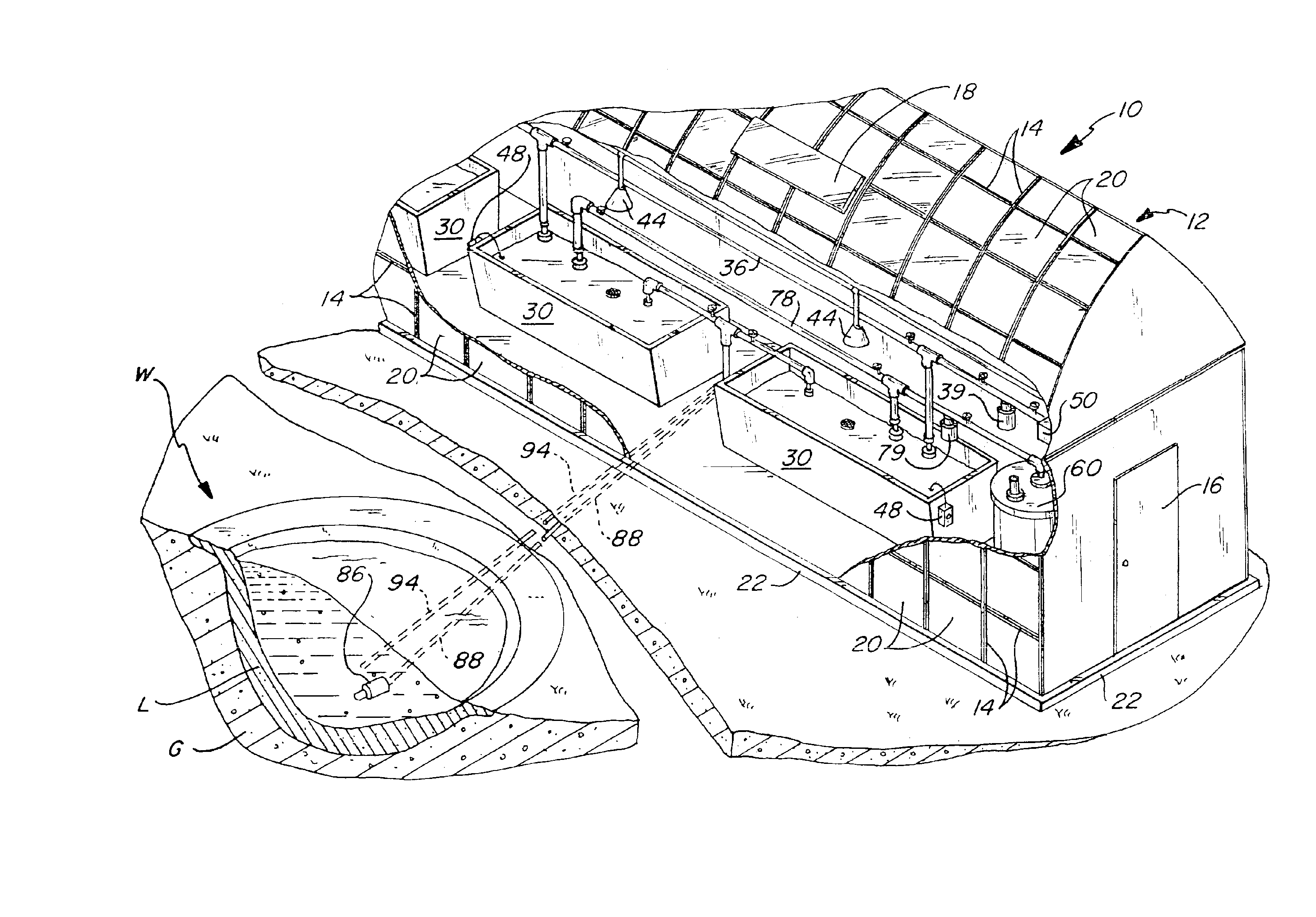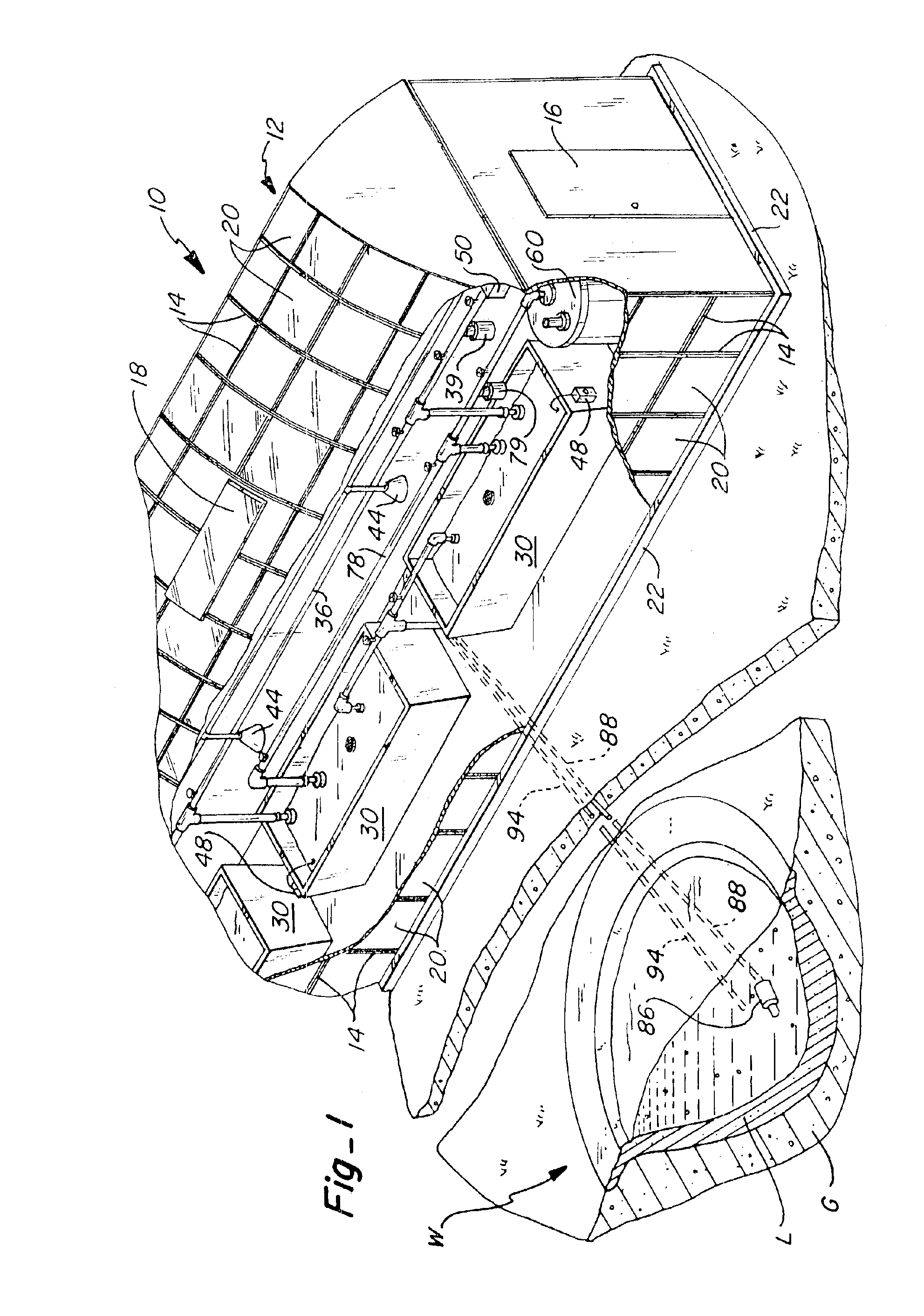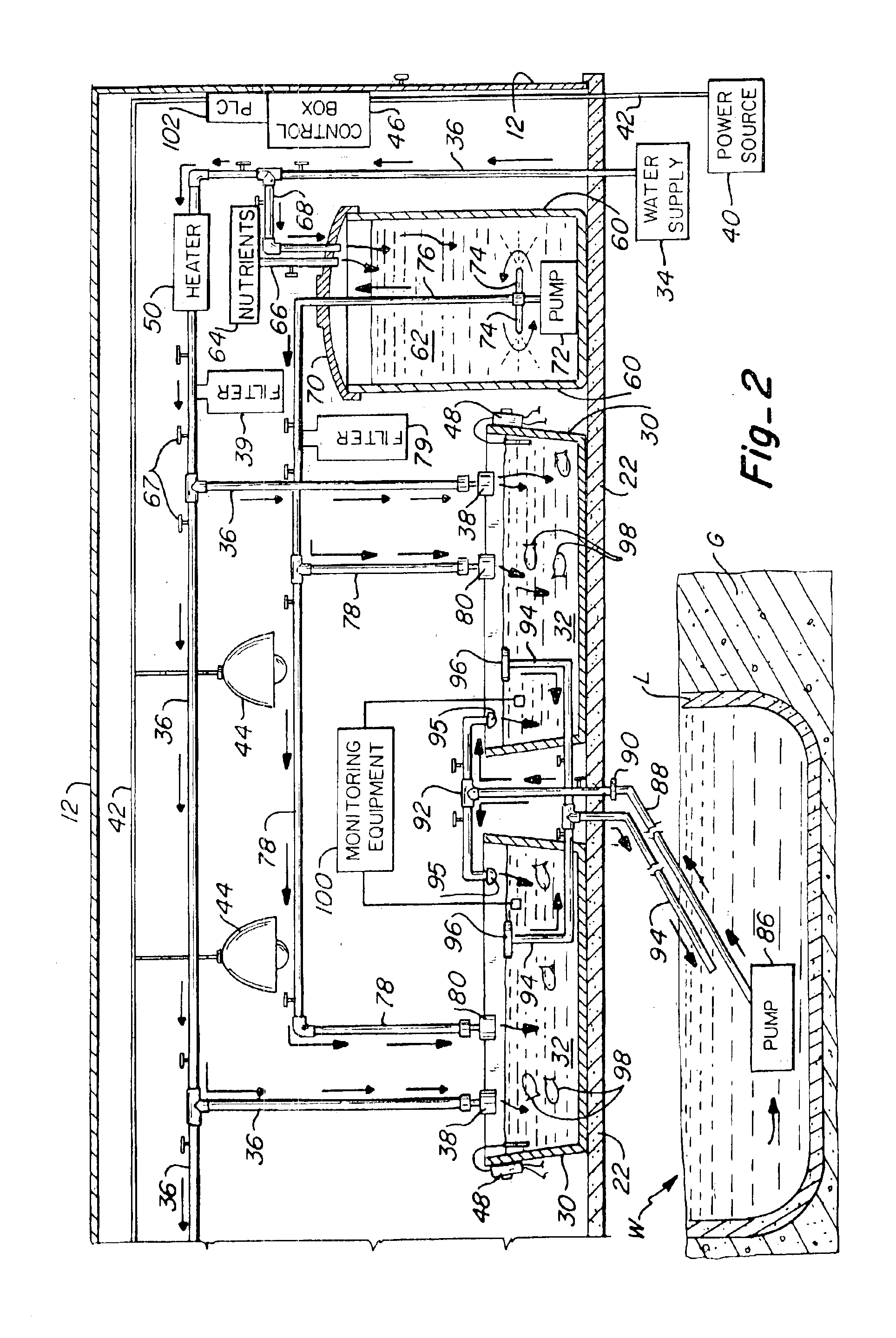System and method for remediation of waste
- Summary
- Abstract
- Description
- Claims
- Application Information
AI Technical Summary
Benefits of technology
Problems solved by technology
Method used
Image
Examples
example 1
[0092]Pond #1 is 100′×225′×12′ with a capacity of 6 acre feet. Four swine confinement buildings (slatted floor, pull pit), with a total one time capacity of 3,600 head, drain into this receiving pond on a weekly basis. The average BOD concentration of the waste stream is 18,900 mg / L, the NH3-N measurement is 1,280 mg / L, and the concentrated dissolved oxygen is 0.06 mg / L. The surface area prior to treatment was completely crusted and thick enough (18-24″) to allow a person to walk across. The bottom sludge had built up to a depth of 8′ with free flowing liquid depth of 2-2.5′ under the crust. Maintaining a continuing flow from the discharge point into the next settling pond became a weekly maintenance issue due to the heavy crust and sludge buildup.
[0093]Post treatment results after the daily delivery of the microalgal culture, were dramatic. Within 12 months, the surface was over 95% free of crust. The bottom sludge has been reduced to a soft slurry that continues to break down; and...
example 2
[0094]Pond #3 is 80′×320′×15′ with a capacity of 9 acre feet. Four swine confinement buildings (flush gutter), with a total one time capacity of 3,600 head, drain into this receiving pond on a daily basis. The pond has been mechanically cleaned twice since 1970 to remove all the organic sludge that clogged the pond. The daily BOD load is approximately 7260 mg / L, and the dissolved oxygen concentration is ≦0.05 mg / L. Prior to treatment, the surface area was completely crusted and would not permit a boat to be used for grab samples anywhere on the pond. The outlet discharge point to the next holding pond had to be relocated 200′ closer to the inlet receiving point due to sludge and crust buildup that prevented free flow to the original outlet point. After 8 months of daily treatment of the microalgae which included the four winter months of November, December, January, and February, the surface area crust has been reduced by 50%. The farthest, original discharge outlet into the next ho...
example 3
[0102]The microalgal culture of the invention was originally isolated from small pond fed by water from a fresh water spring in the United States of America. The culture has been maintained in various growth culture tanks in different waste remediation projects using a remediation system according to the invention, as well as in separate cultures. The primary growth media fed to the cultures has been an organic medium based on fermented animal wastes and subsequently an inorganic commercial medium, such as Pro•Culture A & B Professional F / 2 Algal Culture Formula (Kent Marine®, Marietta, Ga.), described previously herein.
[0103]Aquatic samples of microbial cultures that had been established in the growth tanks fed with Pro•Culture A & B Professional F / 2 Algal Culture Formula (Kent Marine®, Marietta, Ga.) inorganic medium and used in the remediation systems described herein have been analyzed for the algal constituents contained within the assemblage. Samples were tested within a short...
PUM
 Login to View More
Login to View More Abstract
Description
Claims
Application Information
 Login to View More
Login to View More - R&D
- Intellectual Property
- Life Sciences
- Materials
- Tech Scout
- Unparalleled Data Quality
- Higher Quality Content
- 60% Fewer Hallucinations
Browse by: Latest US Patents, China's latest patents, Technical Efficacy Thesaurus, Application Domain, Technology Topic, Popular Technical Reports.
© 2025 PatSnap. All rights reserved.Legal|Privacy policy|Modern Slavery Act Transparency Statement|Sitemap|About US| Contact US: help@patsnap.com



